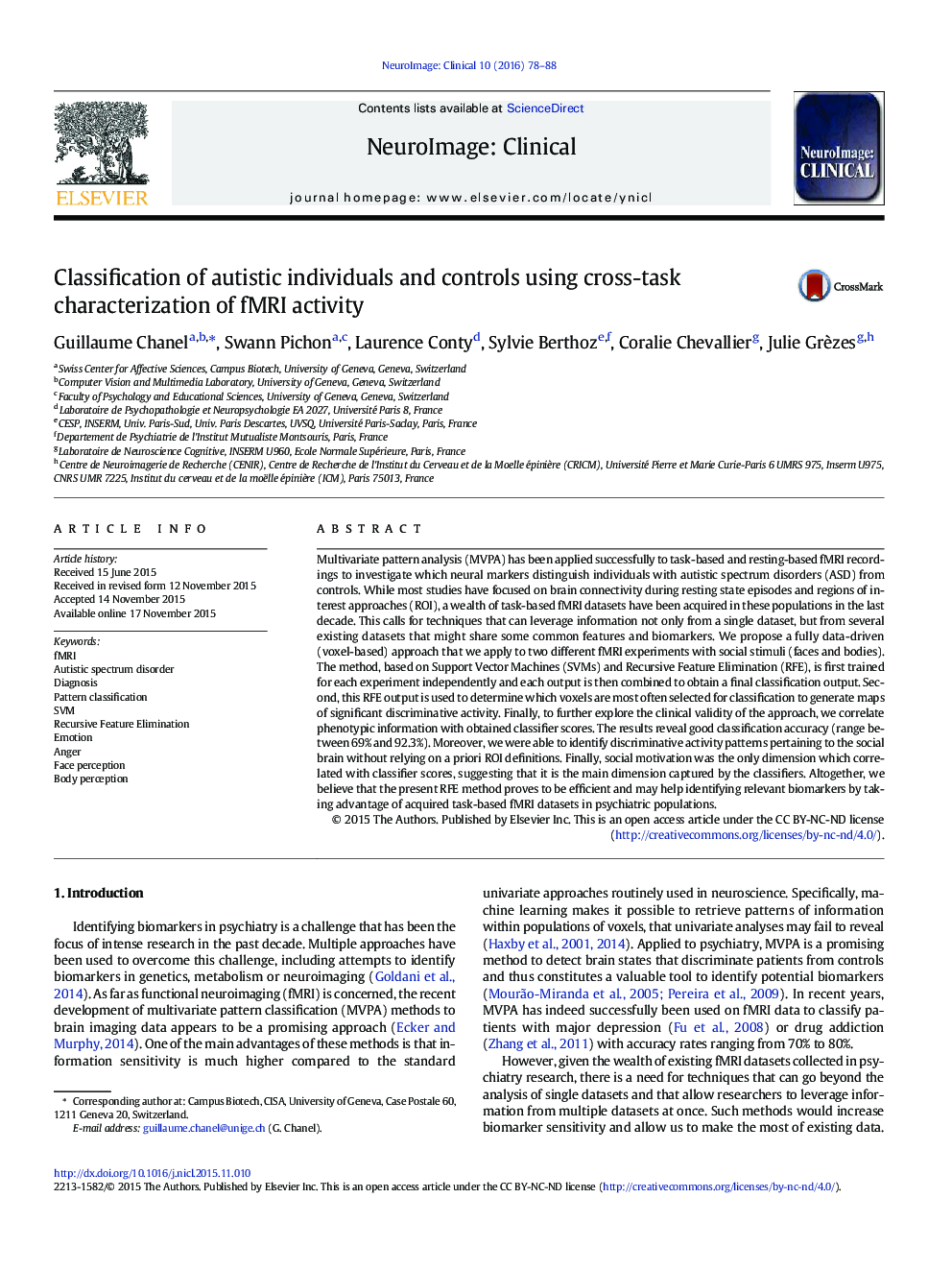| کد مقاله | کد نشریه | سال انتشار | مقاله انگلیسی | نسخه تمام متن |
|---|---|---|---|---|
| 3074860 | 1580957 | 2016 | 11 صفحه PDF | دانلود رایگان |

• A classification method to identify common neural markers across several fMRI datasets is proposed.
• This method is applied to classify patients with autism spectrum disorders and controls.
• The method classified autistic patients from controls with an accuracy ranging from 69% to 92.3%.
• Discriminative activity patterns were found in several regions of the social brain.
• Classifier outputs were correlated with social motivation.
Multivariate pattern analysis (MVPA) has been applied successfully to task-based and resting-based fMRI recordings to investigate which neural markers distinguish individuals with autistic spectrum disorders (ASD) from controls. While most studies have focused on brain connectivity during resting state episodes and regions of interest approaches (ROI), a wealth of task-based fMRI datasets have been acquired in these populations in the last decade. This calls for techniques that can leverage information not only from a single dataset, but from several existing datasets that might share some common features and biomarkers. We propose a fully data-driven (voxel-based) approach that we apply to two different fMRI experiments with social stimuli (faces and bodies). The method, based on Support Vector Machines (SVMs) and Recursive Feature Elimination (RFE), is first trained for each experiment independently and each output is then combined to obtain a final classification output. Second, this RFE output is used to determine which voxels are most often selected for classification to generate maps of significant discriminative activity. Finally, to further explore the clinical validity of the approach, we correlate phenotypic information with obtained classifier scores. The results reveal good classification accuracy (range between 69% and 92.3%). Moreover, we were able to identify discriminative activity patterns pertaining to the social brain without relying on a priori ROI definitions. Finally, social motivation was the only dimension which correlated with classifier scores, suggesting that it is the main dimension captured by the classifiers. Altogether, we believe that the present RFE method proves to be efficient and may help identifying relevant biomarkers by taking advantage of acquired task-based fMRI datasets in psychiatric populations.
Journal: NeuroImage: Clinical - Volume 10, 2016, Pages 78–88